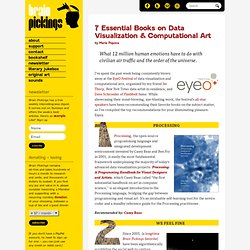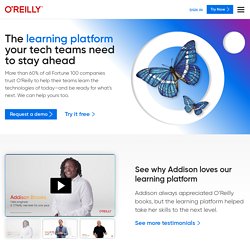

Making Data Meaningful. MDM_Part1_English.pdf. MDM_Part2_English.pdf. The Information Design Handbook. The Visual Display of Quantitative Information: Edward R. Tufte. Designing Infographics: Eric Meyer. Information Dashboard Design: The Effective Visual Communication of Data: Stephen Few. Information is Beautiful: David McCandless. Visualize This: The Flowing Data Guide to Design, Visualization, and Statistics: Nathan Yau.
Designing Data Visualizations: Julie Steele, Noah Iliinsky. Book Description Publication Date: 2 Oct 2011 Data visualization is an efficient and effective medium for communicating large amounts of information, but the design process can often seem like an unexplainable creative endeavor. This concise book aims to demystify the design process by showing you how to use a linear decision-making process to encode your information visually. Delve into different kinds of visualization, including infographics and visual art, and explore the influences at work in each one. Then learn how to apply these concepts to your design process.
Frequently Bought Together Customers Who Bought This Item Also Bought Product Description Book Description Intentional Communication from Data to Display About the Author Noah Illinsky has spent the last several years thinking about effective approaches to creating diagrams and other types of information visualization. What Other Items Do Customers Buy After Viewing This Item? 2.7 out of 5 stars Most Helpful Customer Reviews. 7 Essential Books on Data Visualization & Computational Art. By Maria Popova What 12 million human emotions have to do with civilian air traffic and the order of the universe.

I’ve spent the past week being consistently blown away at the EyeO Festival of data visualization and computational arts, organized by my friend Jer Thorp, New York Times data artist in residence, and Dave Schroeder of Flashbelt fame. While showcasing their mind-blowing, eye-blasting work, the festival’s all-star speakers have been recommending their favorite books on the subject matter, so I’ve compiled the top recommendations for your illuminating pleasure. Enjoy. Processing, the open-source programming language and integrated development environment invented by Casey Reas and Ben Fry in 2001, is easily the most fundamental framework underpinning the majority of today’s advanced data visualization projects.
Recommended by: Casey Reas Reviewed in full here. Data Flow. If there is one resource we’re not short of these days it is data. We’re swimming in the stuff and generating it all the time. Making visual sense of all that data requires a fine balance between complexity and simplicity. Data Flow: Visualising Information in Graphic Design is an absolutely beautiful collection of some of the finest examples of the art. Before I get onto the content I have to talk about the production. Style books. The Data Journalism Handbook - v0.1. Data Science Kit - Deals Data Science Starter Kit The Tools You Need to Get Started with Data From basic statistics to complex modeling and large-scale analytics, the Data Science Starter Kit outlines a clear path to mastering data and gets you started with essential tools, key algorithms and methods, and a survey of the hottest languages and frameworks in today's ecosystem.

If you're ready to plunge into the world of data, the Starter Kit provides the comprehensive introduction you're looking for. Buy any two titles and get the 3rd Free with discount code: OPC10 Or, get them all for $209.20 (60% savings) Books. Processing for Android: Create Mobile, Sensor-Aware, and VR Applications Using Processing Andrés Colubri.

Published 2017, Apress. 381 pages. Paperback. » Order Print/EBook from Apress » Order Print from Amazon Learn how to use the Processing programming language and environment to create Android applications with ease. This book covers the basics of the Processing language, allowing users to effectively program interactive graphics in 2D and 3D. It also details the application of these techniques to different types of Android devices (smartphones, tablets, wearables and smartwatches). Processing for Android walks you through the steps of taking an initial idea to a final app. An advantage of Processing for Android over more complex programming environments is the ability for users to focus on the interactions and visual output of their code rather than in the implementation details of the Android platform.
Visualizing Data: Exploring and Explaining Data with the Processing Environment: Ben Fry.